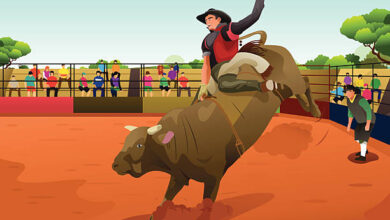Art:6g-Kelv5ev0= Design

The interplay between traditional artistic principles and contemporary technological advancements, encapsulated in “Art:6g-Kelv5ev0= Design,” represents a pivotal shift in the creative landscape. This fusion not only enriches artistic expression Art:6g-Kelv5ev0= Design also invites a reevaluation of how art engages its audience. As interactive installations and multi-sensory experiences become more prevalent, one must consider the implications of this evolution on both the artist’s role and the viewer’s experience. What challenges and opportunities lie ahead in this uncharted territory of creativity?
The Fusion of Art and Technology
The fusion of art and technology has transformed the creative landscape, blurring the lines between traditional artistic practices and modern digital innovations. This convergence has given rise to an era where digital aesthetics play a pivotal role in shaping contemporary art forms. Artists now harness technology not only as a medium but also as a canvas, enabling them to explore concepts and ideas that transcend the limitations of physical space.
Interactive installations exemplify this transformation, inviting audiences to engage with art in dynamic and immersive ways. These installations often leverage cutting-edge technologies, such as augmented reality and virtual reality, allowing viewers to step into a multi-sensory experience. By fostering participation, artists create a dialogue between their work and the audience, encouraging a sense of freedom and personal expression.
In this new artistic paradigm, the collaboration between creators and technologists cultivates innovative expressions that challenge conventional boundaries. As digital aesthetics evolve, they invite artists to reconsider their roles and the potential of their work in an increasingly interconnected world.
This ongoing interplay between art and technology ultimately enriches the creative experience, offering endless possibilities for exploration and expression.
Read Also: Art:4uxyoiwl4eg= Among Us Coloring Pages
Principles of Art:6g-Kelv5ev0= Design
Numerous principles define the realm of art and design, serving as foundational elements that guide the creative process. Among these, color theory plays a pivotal role, influencing the emotional and psychological response elicited from viewers. Understanding how colors interact—through complementary, analogous, and triadic schemes—empowers artists and designers to create compositions that resonate deeply with their audience.
Another critical principle is visual hierarchy, which organizes elements in a way that directs the viewer’s attention. By manipulating size, contrast, and alignment, creators can establish a clear focal point, leading to a more engaging experience. This principle is essential in both digital and traditional mediums, ensuring that the most important information stands out and is easily comprehensible.
Together, these principles foster an environment where creativity flourishes. They encourage artists to push boundaries while maintaining a sense of order and clarity in their work.
Impact on Modern Art:6g-Kelv5ev0= Design
Incorporating principles like color theory and visual hierarchy has significantly shaped modern creativity, allowing artists and designers to innovate while remaining grounded in foundational concepts. This fusion of tradition and innovation fosters an environment where creative expression can flourish unfettered.
As contemporary creators engage with these principles, they navigate the complex landscapes of meaning and emotion, crafting works that resonate deeply within our rapidly evolving cultural context.
The impact of these foundational concepts can be seen in the way artists draw inspiration from diverse cultural influences, allowing for a rich tapestry of ideas and techniques. This cultural evolution not only broadens the scope of creative possibilities but also encourages collaboration across different disciplines, empowering individuals to explore and express their unique visions.
In a world where boundaries are increasingly blurred, the ability to harness established principles while embracing the avant-garde is vital. Modern creativity thrives on this dynamic interplay, enabling artists to challenge norms and redefine aesthetics.
As we move forward, the interplay of creative expression and cultural evolution will continue to inspire and shape the future of art and design, inviting all to partake in this vibrant journey of discovery.
Read Also: Art:4uwqsfu2pnk= Hyperpop
Conclusion
In the vibrant tapestry of contemporary creativity, the fusion of art and technology emerges as a luminous thread, weaving together diverse cultural influences and innovative techniques. This dynamic interplay not only challenges the boundaries of Art:6g-Kelv5ev0= Design artistic practices but also invites audiences into a realm of immersive experiences. As artists navigate this evolving landscape, the dialogue between the established and the avant-garde cultivates a flourishing environment where creativity blossoms, akin to a garden nurtured by the rains of inspiration.




